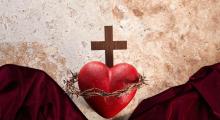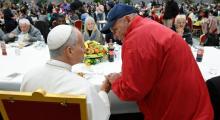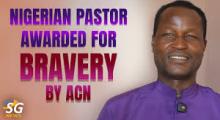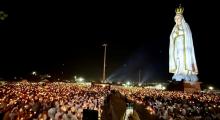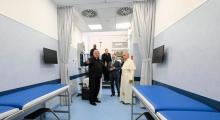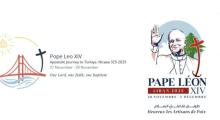Issued by the Catholic Center for Studies and Media - Jordan. Editor-in-chief Fr. Rif'at Bader - موقع أبونا abouna.org
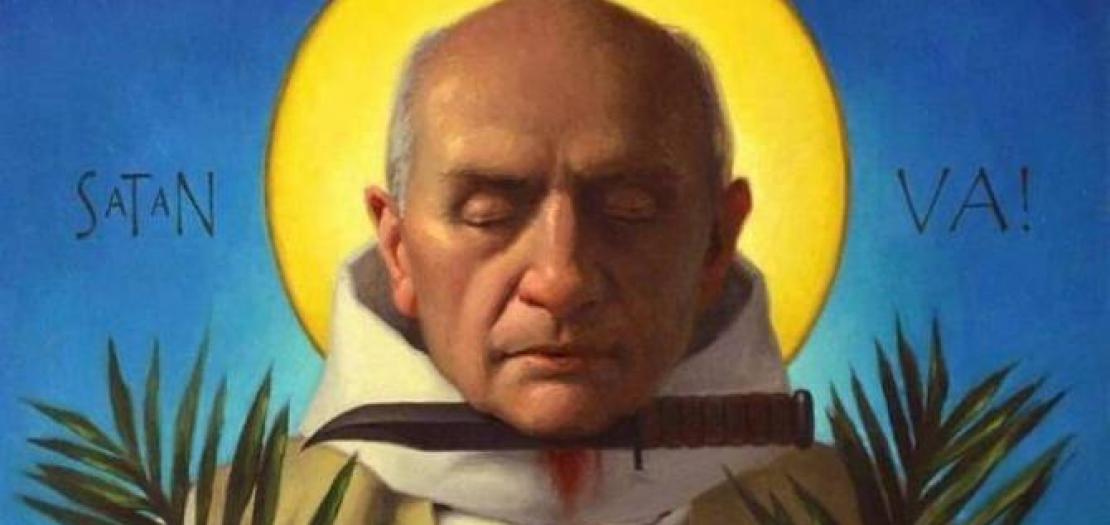
When Archbishop Dominique Lebrun of Rouen travels through France or goes abroad he often identifies himself as "the archbishop of Father Hamel".
It's a symbolic change because, up until the 85-year-old Hamel's assassination on July 26, 2016 during the middle of Mass, the Archdiocese of Rouen was more famous for being the place where Joan of Arc was burnt at the stake in 1431 for heresy.
The change illustrates the worldwide impact of the elderly priest's murder at the hands of two terrorists in his parish church in the small town of Saint-Étienne-du-Rouvray.
SAINT-ÉTIENNE-DU-ROUVRAY, A PLACE OF PILGRIMAGE
Far from being forgotten four years after the tragedy, the figure of Father Hamel remains a beacon in France.
It was significant that the country's new Interior Minister, Gérald Darmanin, went to Saint-Étienne-du-Rouvray this past Sunday for anniversary celebrations to honor the murdered priest.
Archbishop Éric de Moulins-Beaufort, president of the French Bishops' Conference, also attended.
In these past four years this city of 28,000 inhabitants has seen a constant flow of visitors who have come to pray at the church where the priest was martyred, even though his process for beatification is not over yet.
"It has become a place of pilgrimage. People continue to come from all over France and occasionally from abroad," notes Father Hubert Ngoma, vicar of the parish.
What do they come to look for at the scene of Father Jacques Hamel's death?
Why has this priest, who appeared so fragile among so many others devoted to God and others, and who never sought the spotlight during his life, become the symbol for believers and non-believers alike?
Among the Catholics who come to worship at the scene of the assassination, Archbishop Lebrun has welcomed groups of priests who have often come with their bishops.
"For them, Father Hamel is a witness to simple and hidden fidelity: the fidelity of a ministry in the midst of all in a multi-faith city," he says.
He does not hide his emotion at having recently learned that the most recently ordained priest of the diocese immediately went to Hamel's tomb.
The book of prayer intentions inside the parish church testifies that the martyred priest is already a spiritual figure of guidance and inspiration for the faithful.
A "UNIVERSAL BROTHER"
Roseline Hamel, who has worked to keep her brother's memory alive, points out that he has become a "universal brother".
"From the day of his martyrdom, with all the signs of solidarity and emotion aroused by his death, he became the symbol of hope for understanding between all people, whatever their differences," she says.
But with his assassination by two terrorists coming just 12 days after an attack in Nice killed 87 people and injured hundreds of other, the priest could have become a sign of hatred, intolerance and division in an already fragile country.
"During the days that followed, everyone feared that this act would unleash a violent reaction," recalls Father Vincent Feroldi, director of the bishops' office for relations with Muslims.
"The miracle is that what should have happened did not happen," he points out.
"Immediately, Christians and Muslims refused to go in the direction of the terrorists and made the choice of fellowship, which needs to be stronger than hatred and death," Father Feroldi adds.
Still speaking with some emotion of Father Hamel, Anouar Kbibech, former president of the French Council of the Muslim Faith (CFCM), recounts his regular visits to Saint-Étienne-du-Rouvray, especially for Islamic-Christian meetings under the patronage of the murdered priest.
"A feeling of belonging to the same family that faced the same tragedy continues to live in both communities," he insists.
He remembers inviting the Muslim community to join Sunday Masses following the attack "as a concrete demonstration of their condemnation of the horror of this act and their compassion for Catholics".
He describes it as an "historic gesture" that took courage and likely shook up some young Muslims.
SOURCE OF INSPIRATION FOR INTER-RELIGIOUS DIALOGUE
Kbibech says Father Hamel is more than ever a "source of inspiration to strengthen interreligious dialogue". He says there has been a noticeable change in this regard since the priest's murder.
"He is not a symbol of terrorism, but of fraternity among believers and of the resistance that the French have shown in refusing to fall into the trap of terrorists by turning against each other," the Muslim leader argues.
He confesses that immediately following the killing he prayed each morning that he would not learn of a violent reaction against the Muslim faithful.
Although it is difficult to measure Father Hamel's imprint at the heart of the links between Muslims and Christians, those involved in the dialogue are convinced that his legacy lives on.
Father Feroldi refers to him as a "marker to help us denounce the use of God to commit acts of violence" and as an example of "a life of faith that bears witness to God's love for all people".
To illustrate the emblematic dimension of Saint-Etienne-du-Rouvray in Islamic-Christian relations, he cites two significant examples.
The first was the arrival of the "peace caravan" in October 2016. This was an initiative of the Muslim Wise Men Council, chaired by the Grand Imam of the Al-Azhar Mosque in Cairo (Egypt).
And the second was an even more unexpected visit last December of the Saudi Arabian Mohammed Al Issa, Secretary General of the World Islamic League. He was welcomed by Archbishop Lebrun.
"STATE CANONIZATION"
The city of Saint-Étienne-du-Rouvray accepts and claims this heritage.
Joachim Moyse, the communist mayor, is pleased that his municipality, "which is a place of great diversity," has remained "faithful to its values."
He says the city's inhabitants see Father Hamel as "a man of the Church and a citizen". He remains the "symbol of a peaceful fraternity… at a time when we constantly wonder about the implementation of good living together", the mayor declares.
Jean-Paul Willaime, a religious sociologist, says the memory of the priest transcends division.
He calls Father Hamel the example of an "inclusive secularism".
"Through the reactions of interreligious fraternity that were manifested by his death," says Willaime, he became the "symbol of fraternity and peace among all the components of the nation".
"One could almost speak of the state canonization of Father Hamel," he continues.
"In the triptych of the French Republic, fraternité is the most fragile dimension, it cannot be decreed, but it is built and lived in daily life," he notes.
"With this tragic event, the Republic rediscovered that the different religions could be resources for bringing this value to life."
And Anouar Kbibech says Father Hamel even became the face of fraternité.


